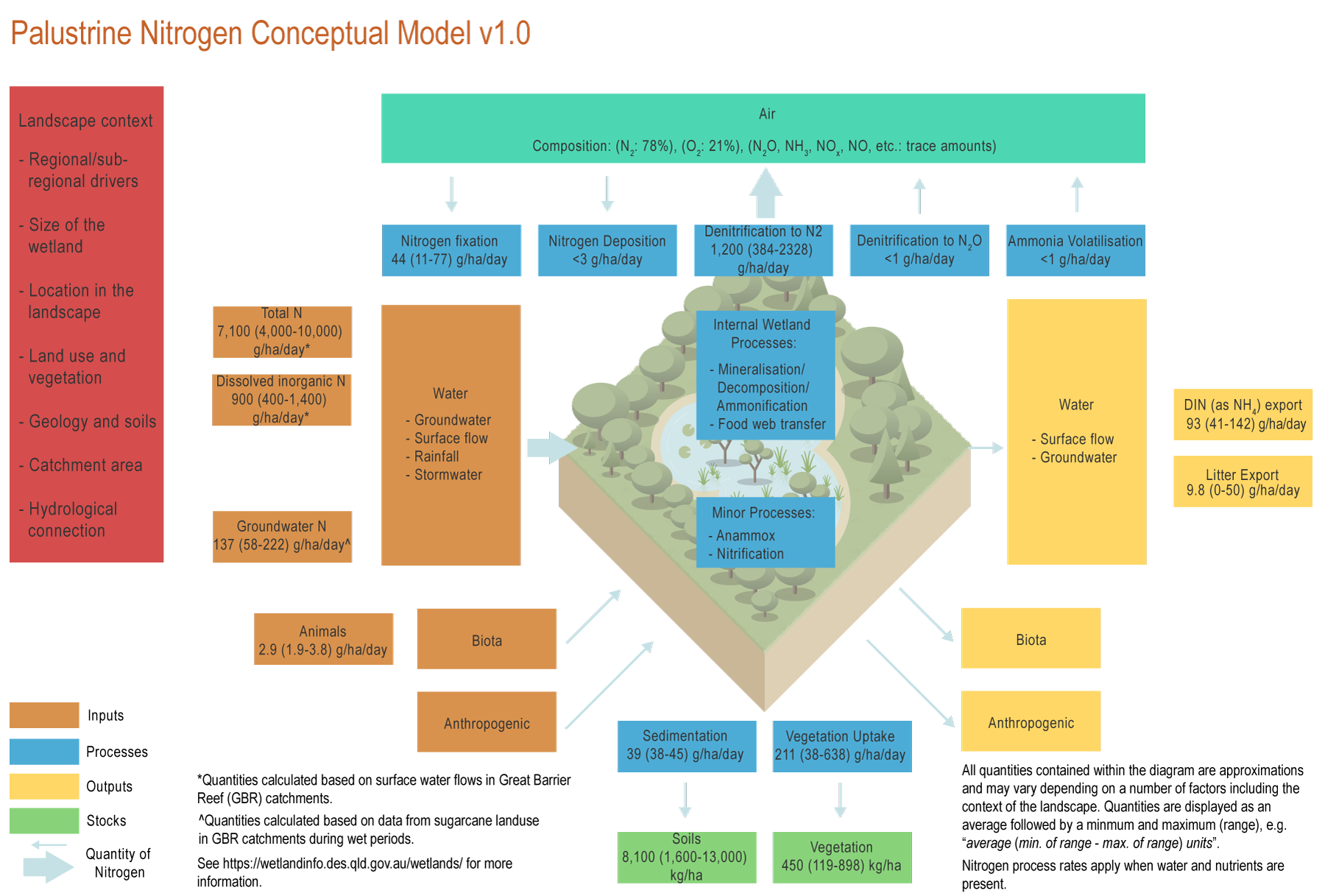|
|
PalustrinePalustrine – Management
The conceptual models were compiled by researchers in collaboration with a wide range of stakeholders from Natural Resource Management groups, universities and government agencies and based on available scientific information[4]. Click on elements of the model or select from the tabs below Management and rehabilitation of wetlands needs to be considered in the context of the overall ecosystem services provided by the wetland and enhancing one aspect must be balanced with the other objectives involved in managing the wetland. If the goal is to improve water quality, palustrine wetlands need to be managed to increase residence time, increase macrophyte cover, increase water/soil ratio and promote denitrification by maintaining alternating aerobic and anoxic conditions. This requires times or microspaces in the soil where oxygen is available (to enable nitrification) coupled with times/spaces where there is not, to promote denitrification. If weeds become excessive removal may be required. If the goal is to improve biodiversity and fisheries values, the management of palustrine wetlands should be focused on improving hydrological connectivity, fish passage and eliminating feral species[1][2]. Note: the above does not include management actions on land surrounding the wetland and the broader catchment. Management of farm practices, stormwater and wastewater flows, installation of treatment systems, and other catchment activities can also reduce the impacts of nutrients on wetlands. References
Last updated: 31 July 2021 This page should be cited as: Department of Environment, Science and Innovation, Queensland (2021) Palustrine – Management, WetlandInfo website, accessed 8 May 2025. Available at: https://wetlandinfo.des.qld.gov.au/wetlands/ecology/processes-systems/nitrogen-concept-model/palustrine/management.html |

 — Department of the Environment, Tourism, Science and Innovation
— Department of the Environment, Tourism, Science and Innovation

